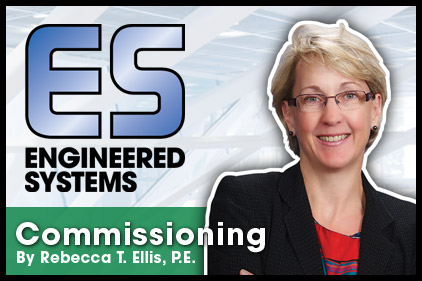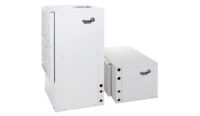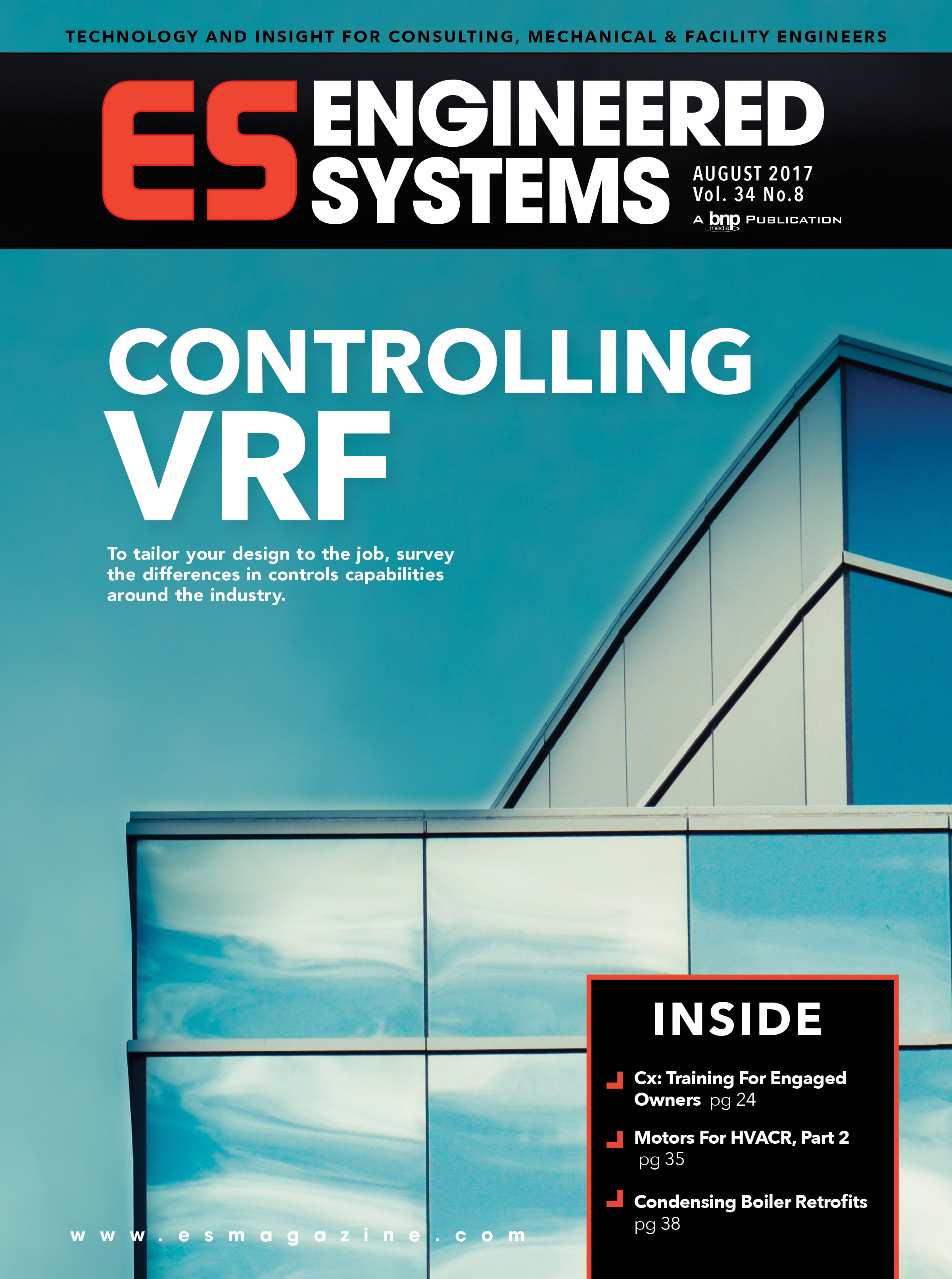The project was designed and specified to have water-to-water heat pumps fully monitored and controlled by the BAS. During the submittal review process, the contractor offered a cost savings to the owner for removing the heat pumps from the BAS and having them controlled solely by onboard controllers. This “value engineering” proposal did not include an interface card for sharing heat pump points with the BAS, although there were a few standard contacts provided for alarms, status, and enable/disable. This proposal was not vetted by the full owner/designer/commissioning team before it was approved.
Of course, the contractor promised the same capabilities and performance with the onboard controllers as were specified with the BAS (with the obvious exception of not being monitored by the BAS). During end-of-construction functional performance testing, the heat pumps performed as expected under test conditions. After system acceptance and owner move-in, the heat pumps began having problems during normal operation, such as short cycling, tripping out on various safeties, etc.
Troubleshooting the heat pump issues was orders of magnitude more difficult and frustrating for the owner and commissioning professional without a full BAS interface to the heat pumps. There was no ability to trend key points from the heat pumps (temperatures, compressor status, flows, etc.), and the owner was totally dependent on the contractor’s service technician to evaluate the problems on site.
As is typical of any system problem, there was no way to guarantee that the bad behavior would occur at the time the service technician had a visit scheduled. Therefore, there were months of service calls resulting in heat pump resets and nothing more. No one had the information needed to perform the required analysis to find and fix the root causes of the problems. Also, no one on the project team wanted to take ownership of the problems, and everyone had a theory about how they were someone else’s fault.
After months of prodding and pushing on the owner’s part, it was finally discovered that at least some of the problems were internal to the heat pumps, including incorrect compressor modulation relays and unreliable differential pressure flow switches. The heat pump manufacturer has been working on correcting those problems, but the system is still not performing exactly as desired. Again, without robust information sharing between the heat pumps and the BAS, it is extremely cumbersome to determine what root cause issues remain.
The point of this story is not to point out that factory-provided onboard controllers can have problems (although we have seen many that do) or are inherently bad. It is to highlight the benefits to be gained by having a full BAS interface to onboard equipment controllers. It isn’t because the system will not functional properly — theoretically, the system should be expected to function well within the limitations of the standalone controllers’ capabilities — it is because of what happens when things don’t work well. When things go wrong, we are back to the good old days when we needed to troubleshoot problems one device at a time without the advantage of evaluating system-level data to help pinpoint the probable cause(s) of the problem.
JUST THE FACTS
Having full input and output point data from the heat pumps, as well as from the rest of the HVAC system, at the BAS would have allowed the owner and commissioning professional to validate or debunk theories provided to them by the contractor. For example, if the heat pump manufacturer claimed that the heat pumps were shutting off due to insufficient flow, the BAS data for the pumps, valves, and hydronic system pressures could be compared side by side with heat pump data points to prove or disprove that theory.
Full BAS monitoring and control of the heat pumps could have benefitted the building owner as follows:
• Avoided months of unsatisfactory HVAC system operation for the new building;
• Saved hours of O&M time fielding service calls, troubleshooting the issues, coordinating the contractor site visits, and participating in meetings;
• Saved hours of the commissioning professional’s fee associated with working through the water-to-water heat pump issues with the project team.
All of the above became painfully evident to the owner through this project. This owner has subsequently standardized a requirement for major mechanical equipment, as technically appropriate, to be specified without onboard controllers and, instead, requiring that the equipment be controlled entirely by the BAS. ES






